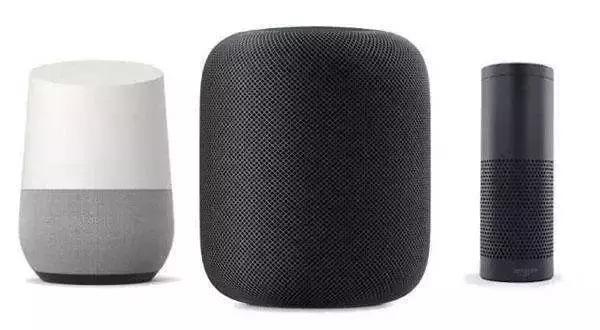模型:
ai4bharat/IndicBART
 英文
英文IndicBART是一个多语言序列到序列的预训练模型,重点关注印度语言和英语。它当前支持11种印度语言,并基于mBART架构。您可以使用IndicBART模型通过使用监督训练数据对模型进行微调来构建印度语言的自然语言生成应用,例如机器翻译、摘要生成、问题生成等。IndicBART的一些显著特点包括:
- 支持的语言:阿萨姆语、孟加拉语、古吉拉特语、印地语、马拉地语、奥迪亚语、旁遮普语、卡纳达语、马拉雅拉姆语、泰米尔语、泰卢固语和英语。其中并非所有语言都在mBART50和mT5的支持范围内。
- 该模型比mBART和mT5(基础版)模型要小得多,因此在微调和解码时计算开销较小。
- 在庞大的印度语语料库(4.52亿句子和90亿标记)上训练,其中也包括印度英语内容。
- 除英语外,所有语言都使用天城体字母表进行表示,以促进相关语言之间的迁移学习。
您可以在此 paper 阅读有关IndicBART的更多信息。
有关详细文档,请参阅 https://github.com/AI4Bharat/indic-bart/ 和 https://indicnlp.ai4bharat.org/indic-bart/ 。
预训练语料库
我们使用了 IndicCorp 跨越12种语言的数据,包含452亿个句子(90亿个标记)。该模型使用mBART中使用的文本填充目标进行训练。
使用方法:
from transformers import MBartForConditionalGeneration, AutoModelForSeq2SeqLM
from transformers import AlbertTokenizer, AutoTokenizer
tokenizer = AutoTokenizer.from_pretrained("ai4bharat/IndicBART", do_lower_case=False, use_fast=False, keep_accents=True)
# Or use tokenizer = AlbertTokenizer.from_pretrained("ai4bharat/IndicBART", do_lower_case=False, use_fast=False, keep_accents=True)
model = AutoModelForSeq2SeqLM.from_pretrained("ai4bharat/IndicBART")
# Or use model = MBartForConditionalGeneration.from_pretrained("ai4bharat/IndicBART")
# Some initial mapping
bos_id = tokenizer._convert_token_to_id_with_added_voc("<s>")
eos_id = tokenizer._convert_token_to_id_with_added_voc("</s>")
pad_id = tokenizer._convert_token_to_id_with_added_voc("<pad>")
# To get lang_id use any of ['<2as>', '<2bn>', '<2en>', '<2gu>', '<2hi>', '<2kn>', '<2ml>', '<2mr>', '<2or>', '<2pa>', '<2ta>', '<2te>']
# First tokenize the input and outputs. The format below is how IndicBART was trained so the input should be "Sentence </s> <2xx>" where xx is the language code. Similarly, the output should be "<2yy> Sentence </s>".
inp = tokenizer("I am a boy </s> <2en>", add_special_tokens=False, return_tensors="pt", padding=True).input_ids # tensor([[ 466, 1981, 80, 25573, 64001, 64004]])
out = tokenizer("<2hi> मैं एक लड़का हूँ </s>", add_special_tokens=False, return_tensors="pt", padding=True).input_ids # tensor([[64006, 942, 43, 32720, 8384, 64001]])
# Note that if you use any language other than Hindi or Marathi, you should convert its script to Devanagari using the Indic NLP Library.
model_outputs=model(input_ids=inp, decoder_input_ids=out[:,0:-1], labels=out[:,1:])
# For loss
model_outputs.loss ## This is not label smoothed.
# For logits
model_outputs.logits
# For generation. Pardon the messiness. Note the decoder_start_token_id.
model.eval() # Set dropouts to zero
model_output=model.generate(inp, use_cache=True, num_beams=4, max_length=20, min_length=1, early_stopping=True, pad_token_id=pad_id, bos_token_id=bos_id, eos_token_id=eos_id, decoder_start_token_id=tokenizer._convert_token_to_id_with_added_voc("<2en>"))
# Decode to get output strings
decoded_output=tokenizer.decode(model_output[0], skip_special_tokens=True, clean_up_tokenization_spaces=False)
print(decoded_output) # I am a boy
# Note that if your output language is not Hindi or Marathi, you should convert its script from Devanagari to the desired language using the Indic NLP Library.
# What if we mask?
inp = tokenizer("I am [MASK] </s> <2en>", add_special_tokens=False, return_tensors="pt", padding=True).input_ids
model_output=model.generate(inp, use_cache=True, num_beams=4, max_length=20, min_length=1, early_stopping=True, pad_token_id=pad_id, bos_token_id=bos_id, eos_token_id=eos_id, decoder_start_token_id=tokenizer._convert_token_to_id_with_added_voc("<2en>"))
decoded_output=tokenizer.decode(model_output[0], skip_special_tokens=True, clean_up_tokenization_spaces=False)
print(decoded_output) # I am happy
inp = tokenizer("मैं [MASK] हूँ </s> <2hi>", add_special_tokens=False, return_tensors="pt", padding=True).input_ids
model_output=model.generate(inp, use_cache=True, num_beams=4, max_length=20, min_length=1, early_stopping=True, pad_token_id=pad_id, bos_token_id=bos_id, eos_token_id=eos_id, decoder_start_token_id=tokenizer._convert_token_to_id_with_added_voc("<2en>"))
decoded_output=tokenizer.decode(model_output[0], skip_special_tokens=True, clean_up_tokenization_spaces=False)
print(decoded_output) # मैं जानता हूँ
inp = tokenizer("मला [MASK] पाहिजे </s> <2mr>", add_special_tokens=False, return_tensors="pt", padding=True).input_ids
model_output=model.generate(inp, use_cache=True, num_beams=4, max_length=20, min_length=1, early_stopping=True, pad_token_id=pad_id, bos_token_id=bos_id, eos_token_id=eos_id, decoder_start_token_id=tokenizer._convert_token_to_id_with_added_voc("<2en>"))
decoded_output=tokenizer.decode(model_output[0], skip_special_tokens=True, clean_up_tokenization_spaces=False)
print(decoded_output) # मला ओळखलं पाहिजे
注意事项:
在下游任务上进行微调
贡献者
- Raj Dabre
- Himani Shrotriya
- Anoop Kunchukuttan
- Ratish Puduppully
- Mitesh M. Khapra
- Pratyush Kumar
论文
如果您使用IndicBART,请引用以下论文:
@misc{dabre2021indicbart,
title={IndicBART: A Pre-trained Model for Natural Language Generation of Indic Languages},
author={Raj Dabre and Himani Shrotriya and Anoop Kunchukuttan and Ratish Puduppully and Mitesh M. Khapra and Pratyush Kumar},
year={2021},
eprint={2109.02903},
archivePrefix={arXiv},
primaryClass={cs.CL}
}
许可证
该模型在MIT许可证下可用。




















